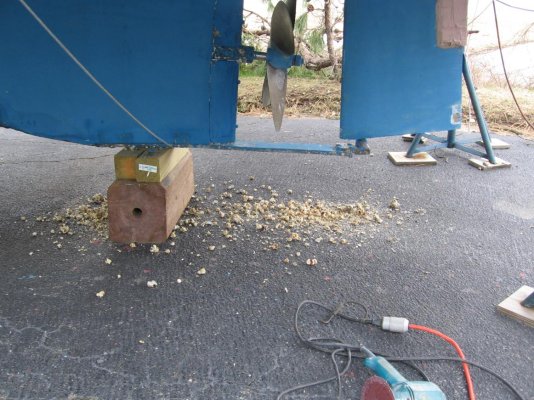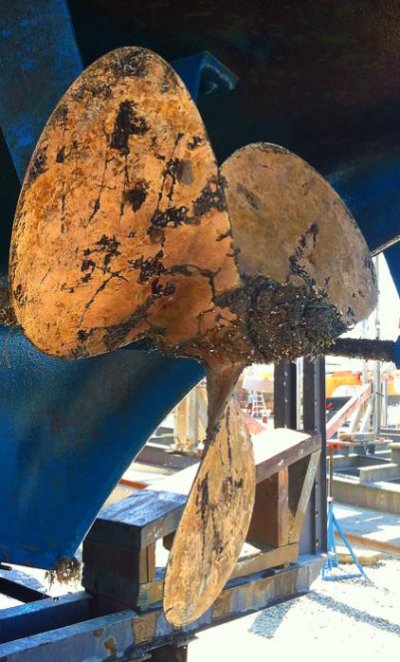For those that know me I have been encouraged to contribute in other areas.
I did consider starting a new thread but there is a perfectly acceptable one here so resurrecting it should allow previous contributors an update.
Treating running gear can be a real issue as in many places where fouling is severe a prop can be smothered in barnacles, if left uncoated, within 3 months. I know this as we trialed a fancy nano technology aerosol product from Germany, complete waste of time, but after 3 months we ground the prop down and tried again, complete waste of time, we ground off - in 3 months we had a prop covered in barnacles.
We have tried Prop Speed and its 'OK' provided you can keep the surface unbroken. If you hit anything in the water the surface is very soft, can break, and this appears to give a toe hold for growth. Once you have growth and try to get it off you can exacerbate the problem. Its also expensive.
We found we were only getting 12 months life (but this was not too big an issue as we only got 12 months from the anodes).
We had it applied by professionals and we applied ourselves - its not difficult, but difficult to buy as an amateur and the pack sizes are large - so good for a 'group' purchase as it cannot be stored and kept.
There is a competitor, imaginatively called Prop Gold.
Greencorp Marine
and it is, or was, available in America.
We have tried it and it as good as Prop Speed (similar technology) though Green Corp say it is stronger.
Its advantage is that it introduces a competitor to Prop Speed and, when we bought, it is cheaper.
And it must be really good as its made in Australia!
The product is relatively new so there are not many independent comments but one local boatyard seems quite happy and uses it in preference to Prop Speed (but that might be because its cheaper).
There is another product called Velox
MARLIN Home » MARLIN
Also available in America, Europe (its made in Italy) and Australia.
Its a 'conventional' hard AF specifically for running gear.
Like Prop Speed and Prop Gold the key is in the preparation and application (not difficult but you do need to follow the instructions - if you do it yourself, as we do). Very important is grinding down the running gear correctly, there are a variety of abrasive that fit an anglegrinder that are suitable (one looks like a resin and abrasive impregnated kitchen scrubber).
Velox needs a primer and then the active top coat.
An advantage to Velox is that once the surface is primed then providing the primer is sound when you come to reapply you only need to lightly abrade, clean and then apply fresh top (active) coat. Being a conventional paint you can buy a pack, primer and top coat, store and use some more next time. Its also cheaper than Prop Gold/Speed.
We have been trialing both Prop Gold and Velox and after 12 months both are as good though Velox does have a noticeable edge (but we are on a swing mooring and maybe one side gets more sunlight). However, as we do all our own servicing, the idea of simply power washing, light abrasion and re-coating has great appeal - and currently I think we will use Velox on both props in 2 weeks time (when we will do the AF).
Velox gets good reports in Europe. Again its relatively new in Oz and again, not many independent reports.
One other advantage of Velox - it comes in a few different colours but only in white in Oz. White turns out to be advantageous as you can see if there is anything foreign whereas Prop Speed/Gold tends to go dark with time.
All of these treatments work best if you can use the boat, or a least turn the prop over, regularly.
Jonathan






